Elephants are the largest mammals living on land and belong to the order Proboscis. The living Proboscidean order is represented by only three types of Elephants-Are-Endangered.html">elephants, namely African savannah Elephants-Are-Endangered.html">elephants, African forest elephants, and Asian elephants. However, the evolutionary history of the Proboscidean order is extremely prosperous, and at least more than 180 species of fossils have been discovered. In particular, Proboscidea is one of the few living order-level mammals whose fossil representatives can be found in the Paleocene. Although it is inferred from molecular biology that the main first-order groups of living mammals, including primates, diverged before the Cretaceous mass extinction of 65 million years ago, however, this is only a theory and does not There is not enough fossil evidence to support it, but the earliest representative of the Proboscis order, Eritherium, was discovered in Morocco, Africa during the Paleocene Epoch about 60 million years ago.
Africa is a special region in the geological history of the Mesozoic and Cenozoic Era. Since the middle Jurassic period 165 million years ago, Pangea has broken apart, and the African plate has been separated from other continents by the ocean. Early mammals began to evolve independently on the African continent. , gave rise to a group called the Afrotheria. The descendants of this group spread out from Africa and evolved to this day, including some species with very different morphologies and ecological adaptations. They range from elephant shrews and golden moles as small as mice, to rabbit-like hyraxes, termite-eating aardvarks, to Manatees-Are-Endangered.html">manatees that are fully adapted to marine life, as well as terrestrial giants, the elephants, the protagonists of this article. All may be derived from a common African ancestor. Since 20 million years ago, the African continent and the Eurasian continent have collided. Mammals from the two continents have met again after being separated for hundreds of millions of years. As the leader among them, the proboscis have traveled further than most African mammals. Eventually it was distributed on several other continents except Australia and Antarctica. This is a story for another day. But we need to remember the African origin of proboscis, because most of the later branches of proboscis, despite their global distribution, often originated in Africa, which seems to be somewhat similar to humans, but humans Our ancestors may have originated in Asia before the Oligocene Epoch (about 34 million years ago). After the Oligocene Epoch, the evolutionary center of primates and humans shifted to Africa.
Let’s return to the evolution of proboscideans. The closest living group to proboscideans is the Manatees-Are-Endangered.html">manatees. It’s hard to imagine that elephants have a distant, aquatic brother. However, Manatees-Are-Endangered.html">manatees also have features that are close to elephants. The fang-like incisors and replacement cheek teeth indicate that the two are closely related. Another living group that is closely related to the Proboscidea is the hyrax, which is about the size of a rabbit and lives in Africa and Arabia. However, it was also historically distributed in China and other places. In addition, there are two fossil groups. One is the heavy-footed beasts, which are huge in size. Among them, the Egyptian heavy-footed beasts have two pairs of huge horns, one large and one small. A large semi-aquatic mammal distributed in Japan, the United States and other places on both sides of the Pacific Ocean. Together with the proboscis, these strange animals form the ungulates, representing a large evolutionary lineage.
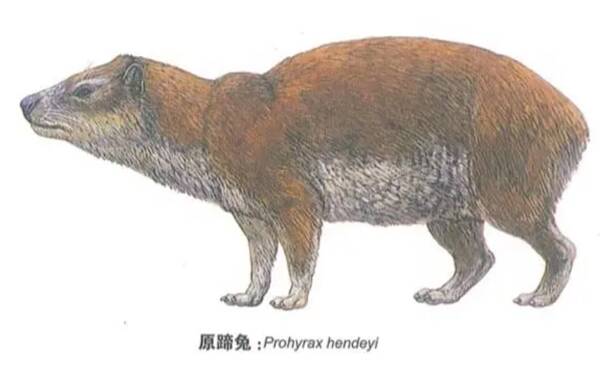
Protohyrax
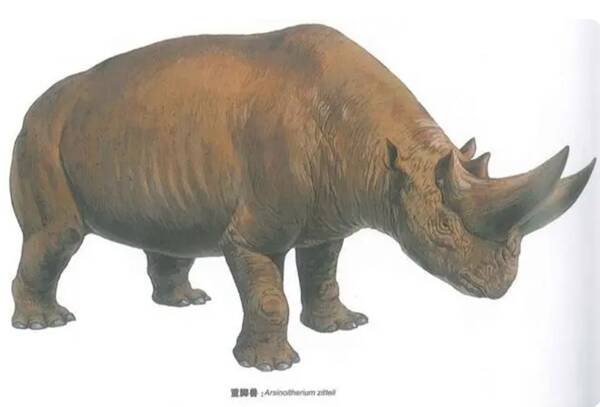
Since the emergence of heavy-footed animals in the Paleocene 60 million years ago, proboscis have embarked on an independent evolutionary path. This is the first of three stages in the evolution of proboscis. At that time, the dawn elephant was only 3 to 8 kilograms, about the size of a rabbit. However, its molars have evolved some characteristics of later Eocene proboscideans, that is, the molars tend to be biridged. Note that this feature is far removed from the molars characteristic of later elephants. By about 55 million years ago in the Eocene Epoch, Phosphatherium evolved and was still found in Morocco, Africa. At this time, the weight of the phosphorus increases to 10 to 15 kilograms, which is as big as a piglet and looks like a piglet. The molars of the phoenix developed into a true double-ridged shape, which is a typical feature of the first stage of proboscideans; its upper and lower second incisors began to enlarge. In the future, these enlarged incisors will evolve into true canines. Teeth are one of the typical features of modern elephants; the proboscis, the most important feature of proboscis, has no signs of development at this period. Proboscis at the same time as Phosphorus or slightly later include Daouitherium and Numidotherium. Their body size has reached the size of a tapir, and they became some passers-by on the early evolutionary path of proboscis. . About 40 million years ago in the late Eocene, a truly behemoth appeared in the proboscis, the Barytherium, with a shoulder height of nearly 2 meters and a weight of about 2 tons. Since the discovery of the heavy beast, it has been regarded as a mysterious animal. It was not until its backbone was discovered that we knew that the 40 million-year-old heavy beast already had some characteristics of the backbone of modern elephants, which also shows that , The enlargement of the body is an evolutionary trend that appeared very early in the proboscis. A larger body is of great significance for proboscis to protect themselves and resist natural disasters; especially later proboscis evolved a flexible proboscis that can be grasped like a hand, solving the problem of other large proboscis. The evolutionary difficulties of large-bodied animals have contributed to the continued prosperity of proboscideans in the late Cenozoic for tens of millions of years. This is a story for another day.
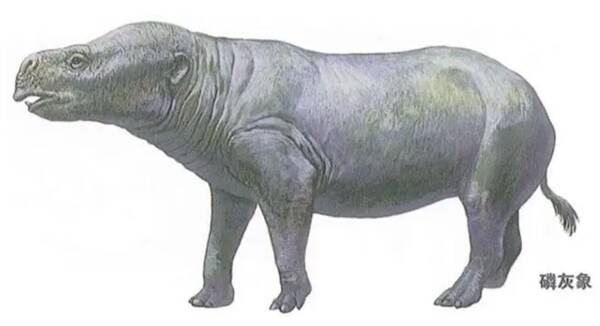
We have already mentioned that the first stage of the evolution of proboscis was characterized by biridge molars, and this feature reached its culmination in the well-known dinosaurs. It was also the first stage of the evolution of proboscis. the last remnants of. There is no fossil record of dinosaurs in the early Oligocene. About 25 million years ago in the late Oligocene, the first dinosaur appeared, Chilgatherium in Ethiopia, and then Prodeinotherum appeared one after another. and Deinotheirum, which spread to Europe and Asia at the same time as the codons and mammoths described below. Deinophorus was a very huge animal, weighing more than 10 tons, and was one of the largest proboscideans. It lacked upper incisors, but had a pair of lower incisors that bent downwards into a hook shape. The nose should not be too long. It is particularly worth mentioning that before the beginning of this century, no fossils of Elephantus had ever been found in China. It seems to be a foregone conclusion that Elephantus did not enter China. However, this speculation was broken in 2007. A research team led by Academician Qiu Zhanxiang and Researcher Deng Tao discovered the fossil of Prototheron sinensis in the early Late Miocene (about 10 million years ago) in Dongxiang County, Gansu Province, which became the entry of Prototheron into China. solid evidence. The reason is that it is very likely that before the late Miocene, there were elephants living in southern China. There are reports of elephants from this period in Thailand and Myanmar. However, the strata from this period are missing in southern China. Therefore, There is no fossil record of Elephantus. At the turn of the middle to late Miocene, a mass extinction occurred in northern China. The shovel-toothed elephants and codons that were prosperous at that time were completely extinct, leaving ecological space for the dinosaurs in the south. Therefore, the dinosaurs moved northward, and in China Linxia area left this extremely precious record. As the climate further cooled in the late Miocene, the dinosaurs had to withdraw from northern China and gradually disappeared in Eurasia. The last dinosaurs became extinct in Africa in the middle Pleistocene (~100,000 years ago).
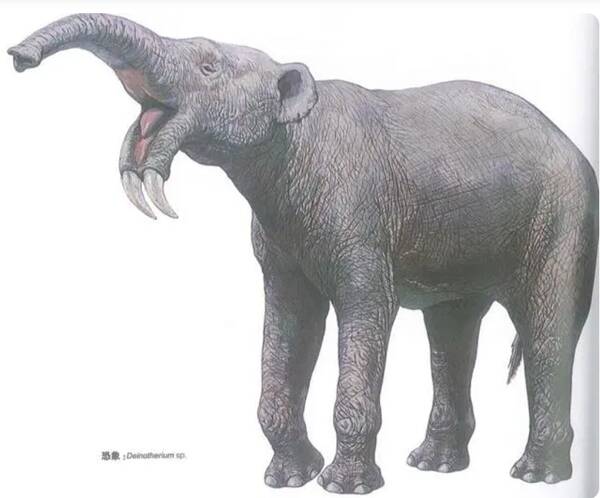
Fear Elephant Let’s go back to Africa in the late Eocene. A proboscis that appeared at the same time as the heavy beast is more famous, namely Moeritheirum, commonly known as the ancestor elephant. Long thought to be the direct ancestor of the elephant. The subsequent discovery of fossils such as phosphatid elephants gradually changed this understanding. The morphology of the bones behind the head of Mohutherium indicates that it was suitable for an amphibious life, like today's hippopotamus. It also had enlarged incisors, but did not have a proboscis. The molars of Mohutherium have begun to develop into mound-shaped, changing the paradigm of the biridge molars of early proboscis. It also indicates some future evolutionary directions of proboscis, although the evolution of Mohutherium may have deviated from the proboscis. The main line of class evolution.
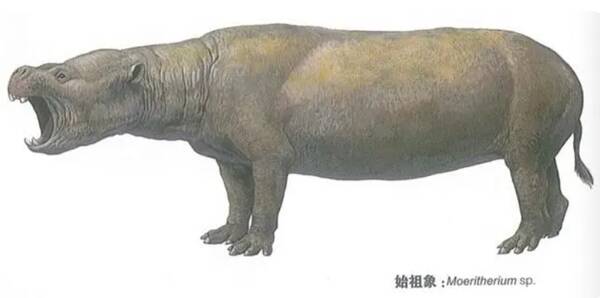
After the ancestral elephant, the evolution of proboscis entered the second stage. It was at this stage that proboscis successfully spread across the world, representing the beginning of the true prosperity of proboscis. It was also at this stage that proboscis truly evolved a long nose, although the proboscis may not be as flexible as the living elephants. , Therefore, the proboscis in this period truly became a long-nosed group. At the beginning of the second stage, the real typical characteristics of proboscideans are the growth of the lower jaw, the upper and lower second incisors are particularly enlarged, the upper teeth become fangs, and the lower teeth become shovel or stick shapes, becoming powerful feeding tools. The proboscis is only used as an auxiliary tool to cooperate with the incisors and mandibles for feeding. From this period onwards, Proboscis received a more familiar name, Elephant, which is the suborder Elephantformes (Elephantoformes) at the suborder level, while Elephantus, Mohutherium, and even Elephantus, etc., taxonomy It cannot be called an elephant. The molars of elephants abandoned the biridge structure in the first stage, and the number of ridges gradually increased, transforming into a hill-ridge type or a complete hill-type. Because the cusps of their teeth are shaped like papillary protrusions, this The elephants in this stage are collectively called mastodons. The teeth of the mastodon began to evolve towards horizontal replacement, which secretly points to the third stage, which is not stated for now. The earliest mastodons are represented by Palaeomastodon and Phiomia in Africa in the early Oligocene Epoch (about 30 million years ago). They were already quite large animals at the time, with their noses and lower jaws elongated, and their lower incisors shaped into shovels, which were obviously powerful feeding tools. After slow development throughout the Oligocene, mastodonts began a large-scale divergence when they entered the Miocene (approximately 25 million years ago). First, they differentiated into two species, mammothids and codons. A large category, represented by Losodokodon and Erithreum respectively. Although some clues from South Asia and China indicate that proboscis may have reached southern and eastern Asia 20 million years ago, the large-scale entry of proboscideans into Eurasia was in the middle of the Early Miocene (about 18 million year), the so-called codon land bridge event was formed, which also became an important symbol of the reunification of Africa and Eurasia in geological history. It was also in the early middle Miocene that mastodonts evolved into four first-level taxa, including Mammothonidae, Gyrodontidae, Pyrodontidae, and Scutodontidae. All of these mastodonts had elongated lower jaws at the beginning of their evolution, and their molars had three ridges or ribs. They were also called triangular long-jawed mastodons. Among these four families, the molars of Mammothidae are hump-shaped, while the other three families are all hump-shaped, and are distinguished by the different shapes of the mandible and lower incisors. The shovel-shaped lower incisors of the Fayoum elephant were inherited by the Fayoum elephant, and the lower jaw was further broadened; the lower incisor of the cog-dont was narrowed and the lower incisor became club-shaped; and the swine-shaped elephant was the most special, with a long groove-shaped lower jaw. , the lower incisors have degenerated, and only a horny blade-like structure protrudes from the front end to replace the lower incisors. These differentiations indicate that mastodon species were constantly adapting to various ecological environments.We have taken broad steps in the same direction and moved forward with our heads held high. During this period, the Mammothidae were represented by Eozygodon in Africa and Zygolophodon in Eurasia, both of which were mastodons with highly ridged teeth; The family is represented by Afrochoerodon in Africa and Choerolophodon in Asia; the family Gomphotherium is represented by Gomphotherium, which is found throughout Eurasia and Africa; and Shovelodon The family is particularly prosperous. Archaeobelodon and Protanancus are found in Eurasia and Africa, and Platybelodon flourished in northern China. The shovel-toothed elephant had a very exaggerated shovel-shaped lower jaw and lower incisors. Although it was early speculated that they lived near the water and fed on water plants, later evidence showed that they probably lived in semi-open areas among sparse forests, using their lower teeth. The incisors cut through plants to obtain food. In many locations in the middle Miocene of China, such as Linxia in Gansu, Tongxin in Ningxia, and Tonggul in Inner Mongolia, spadedons were the most common elements in the fauna, and their numbers were far greater than those of other large mammals.
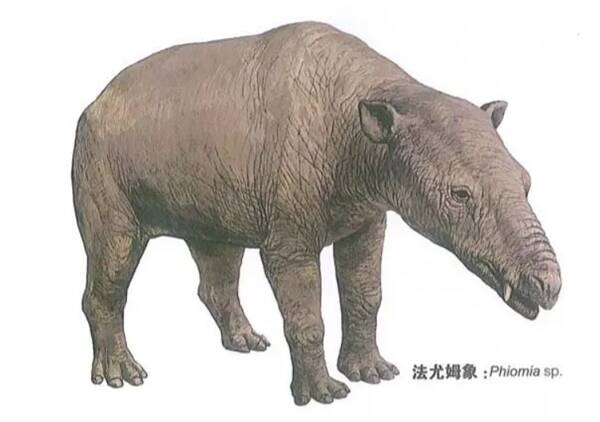
Fayoum Elephant
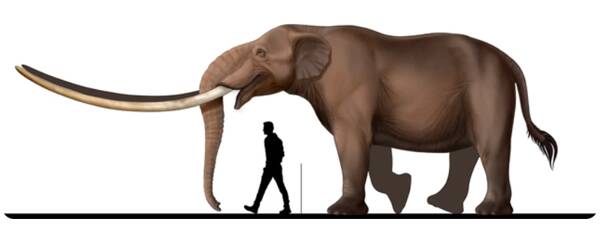
Yoke-dont elephant (picture from the Internet)
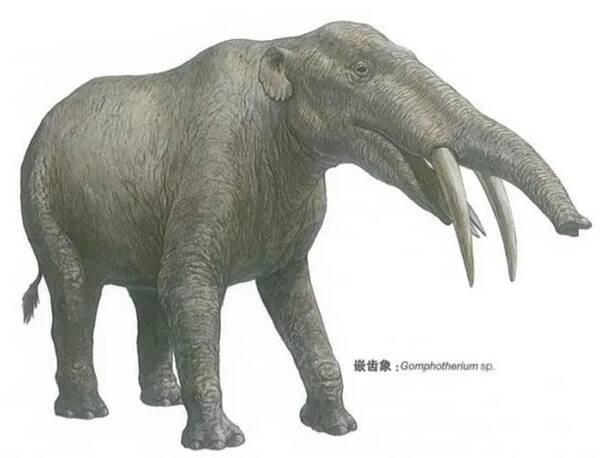
At the beginning of the middle Miocene (about 16 million years ago), the Miomastodon in the family Mammothidae first crossed the Bering Strait and arrived in North America, and other groups in the family Miomastodon also followed. Later, it became an important member of the mammal group in North America. It can be seen later that when the evolution of mastodons in Eurasia encountered major setbacks in the late Miocene, North America became the last refuge for many long-jawed mastodon groups, such as the shovel-shaped incisors in the family Scutodontidae. (Amebelodon), lived in North America until the late Miocene (~6 million years ago), and evolved the largest mandible of land animals. The Gnatabelodon in the family Gnatabelodon also survived until the middle of the Late Miocene (~7 million years ago). The American mastodon (Mammut americanum) of the family Mammut successfully survived in North America until the beginning of the Holocene (~10,000 years ago), and the descendants of the mammut entered South America in the late Pliocene, creating the final prosperity of the mastodon class. , also survived until the beginning of the Holocene. However, the American mastodon and the South American codon have evolved into short-jawed elephants, which will be further discussed below.
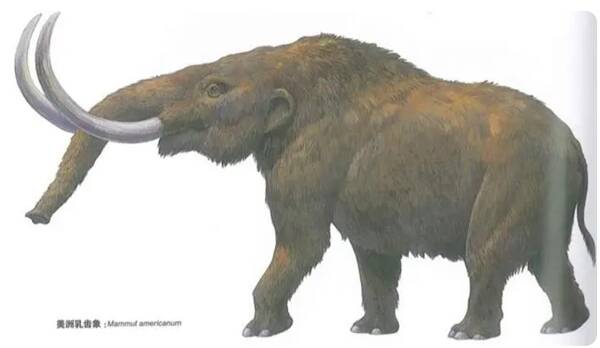
The seven to eight million years from the second half of the Early Miocene to the end of the Middle Miocene (18 to 11 million years ago) were the peak period of mastodon evolution. Various three-sided Long-jawed mastodons occupy the ecological space that large herbivores can occupy. However, they are unaware that an evolutionary crisis for proboscis is quietly approaching. The period when the three-sided long-jawed mastodon flourished happened to correspond to the "Zhongzhong New Climate Suitable Period" in geological history. It was also the last warm period in the world so far. The mastodon species that flourished in the warm period were unpredictable. The cooling of the global climate after the end of the warm period brings survival challenges to them. Of course, this survival challenge targets not only mastodons, but the entire ecosystem. Since 14 million years ago, the climate has gradually cooled, and forest ecosystems have tended to decline in mid- and high-latitude regions around the world, and arid grassland ecosystems have become the mainstream ecological environment in mid- and high-latitudes. Especially in most of the middle and high latitudes of Asia, with the rapid uplift of the Tibetan Plateau, aridification continued in these areas. Finally, at the turn of the Miocene in the middle to late 11 million years, the ecosystem of the Eurasian continent was formed. Major restructuring. According to research, in the northern part of East Asia, no large mammal has survived beyond this boundary. The three-sided long-jawed mastodon, represented by the spadedon, suffered a disaster and was completely extinct. Only a small number of three-sided long-jawed mastodons remain in the southern forest areas, lingering on; or survive in the Americas where climate change is less severe, as mentioned above. Learning from the painful experience, some mastodon species evolved new survival strategies when they suffered a serious survival crisis. The first is that the number of tooth ridges increases, from three to four, or even more, to adapt to the increasingly rough plants; the second change is that the molars are completely replaced horizontally. After one molar is worn out, another molar grows. use, thereby greatly extending the use time of molars; the most significant change is that after 20 million years of training, the evolution of the mastodon's proboscis has reached an unprecedented height in the history of evolution. Their noses are dexterous enough to be comparable to humans. Their hands could independently complete the function of feeding. Therefore, mastodons began to give up their long jaws, and their lower jaws began to evolve in the direction of shortening. As mentioned before, in the Americas, a humerus-type codon, whose lower jaw continued to shorten, passed through the Rhynchotherium stage and evolved into the completely short-jawed Notiomastodon and Cuvier. (Cuvieronius), when the Isthmus of Panama was formed at the end of the Pliocene, it quickly spread into the South American continent and became the dominant species there. At the same time, Mammut borsoni also evolved in Eurasia and the Americas respectively, producing the short-jawed Mammut borsoni and the American Mastodon. The American Mastodon was born in the Pliocene Epoch (~5 million years ago). ) continued to migrate from Eurasia or evolved from the native Mamu elephants, is a highly controversial topic. Perhaps similar to the evolution of humans, Mamu elephants have experienced more than one migration and integration event from Eurasia to the Americas. Although these mastodonts in the Americas had completely shortened lower jaws and the lower incisors eventually disappeared, they still retained the primitive triangular molar pattern.
The real evolutionary leap occurred in Eurasia and Africa in the late Miocene. Three branches emerged from the mound-shaped codons. The more conservative branch reached its evolutionary end and only evolved into four-sided teeth. , but the arrangement of the tooth ridges has changed, that is, Anancus. The other two branches are more advanced, with the number of tooth ridges reaching more than eight ridges, and in the late Pleistocene, it has reached more than 20 ridges. One of them originated in southern Asia and still retained the low-crowned molar shape, which is what we know as Stegodontidae. The other branch originated in Africa, the home base of proboscis evolution. It is also the only proboscis that survives to this day. That is, the Elephant Branch, or the True Elephant Branch to emphasize. When the saber-toothed elephants and elephants were produced, the proboscis also evolved to the third stage, which represented the final prosperity of the proboscis.
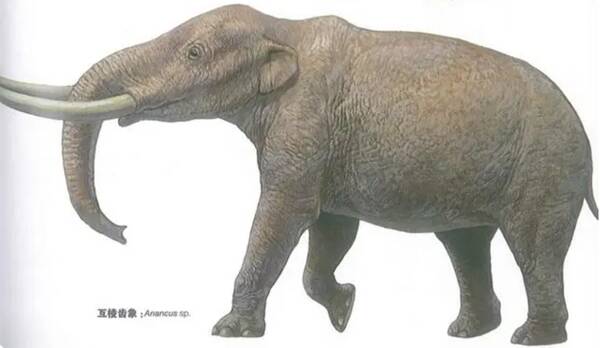
Stegolophodon, the ancestor of Stegodon, showed quite progressive characteristics very early on. In the late Miocene, when other elephants still had three-sided molars and long mandibles, the mandibles of Cynodontus had begun to shorten and their molars evolved into four-sided shapes. Spinodon was centered in Southeast Asia and only spread to China, Japan, and South Asia. Spinodon was the dominant elephant species in eastern China and Japan during the Miocene, which shows that it has always been adapted to a relatively humid ecological environment. By the end of the late Miocene, about 6 million years ago, the stegodont evolved into a stegodon, which appeared in Yunnan, China, as the Zhaotong stegodon. However, what is confusing is that in Africa, about 7 million years ago, the sagodon Some "stegodon" cheek teeth have also been reported. Since the complete evolutionary sequence of early Stegodon elephants has only been found in eastern and southern Asia, and the early "Stegodon elephants" in Africa were produced at the same time as the true elephants, these African "Stegodon elephants" are likely to be early Some of the real images, the shape of cheek teeth is very similar to that of saber-toothed elephants. Those African "stegodons" soon became extinct, while the Asian saber-toothed elephants were very prosperous in the early Pliocene (5 million years ago) and spread all over north and south China. Some of them were included in Chinese primary school textbooks and literati wrote poems about them. Praising the Yellow River Elephant. The Yellow River elephant has also entered the list of the largest proboscideans, with a shoulder height of nearly 4 meters and an estimated weight of up to 12 tons. As the Arctic ice cap remained unchanged throughout the late Pliocene (3 million years ago) and the climate turned sharply colder, saber-toothed elephants retreated to the south again. In China, it is represented by the pre-Oriental Stegodon from the Early Pleistocene, and the Oriental Stegodon from the Middle and Late Pleistocene. In Southeast Asia and South Asia, similar species also exist. Although during the Pleistocene Epoch, compared with the severe cold in the north, the warm and humid climate in the south became an excellent refuge for saber-toothed elephants. However, when the Holocene arrived in 10,000 years, saber-toothed elephants finally settled in southern China and this Extinction on the planet. The Holocene is a period of global warming, which is theoretically more suitable for saber-toothed elephants to survive. Why did saber-toothed elephants fall on the eve of dawn? The study found that compared with its competitor, the Asian elephant, the food range of the saber-toothed elephant was more limited, and the reduction of food sources may be the main reason for their extinction during the Holocene Warm Period. The fate of the saber-toothed brothers, the elephants, was even more ups and downs. Truth originated in Africa around 7 million years ago in the middle of the Late Miocene. Unlike saber-toothed elephants, Africa already had a typical monsoon grassland climate in the late Miocene. The relatively arid climate prompted Truth to emerge from the very beginning. The tooth crowns develop in the direction of increasing height, and the huge molars are lined with dense tooth plates, like huge millstones, capable of crushing any rough food. In the early true elephant, although the lower jaw was shortened, the pair of lower incisors were extremely developed. This was the Stegotetrabelodon with four tusks. I don't know if it was because the four tusks were too many and were of no use. Stegodibelodon quickly became extinct, giving rise to Stegodibelodon and Primelephas, which had only one pair of upper incisors. After this, three main groups of true elephants emerged in Africa, namely the familiar African elephants (Loxodonta), Asian elephants (Elephas), and mammoths (Mammuthus). There is also a type of Palaeoloxodon. Is it more closely related to the Asian elephant or the African elephant in terms of evolution? Morphology and molecular biology offer different interpretations. The evolutionary history of African elephants was mainly limited to Africa. Asian elephants and mammoths spread to Eurasia in the late Pliocene, with mammoths becoming the most dominant elephant species in northern Eurasia. In Eurasia, mammoths have gone through different stages of evolution: the Romanian elephant in the late Pleistocene, the southern elephant in the early Pleistocene, the steppe mammoth in the middle Pleistocene, and the true mammoth, the woolly mammoth, in the late Pleistocene. Southern elephants entered North America during the mid-Pleistocene and evolved into Columbus's mammoths. Southern elephants, steppe mammoths, and Columbus mammoths are the largest in size among proboscideans, weighing close to 20 tons. The ancient rhombus can also reach this size. In the Pleistocene with a very cold climate, due to the periodic changes in the earth's orbit around the sun, glacial periods and interglacial periods alternated. In Eurasia, mammoths and ancient rhomboids distributed in high latitudes and middle and low latitudes waxed and waned. , the distribution range also shows rhythmic changes with the glacial and interglacial periods.
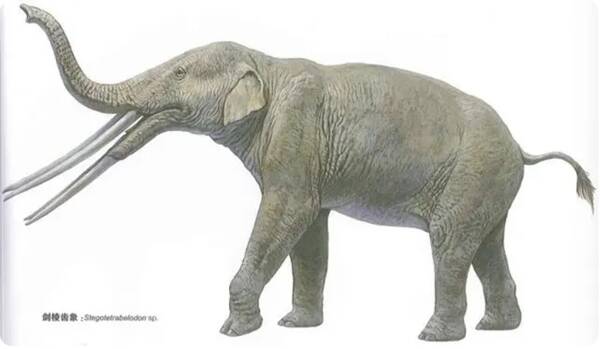
Stegodon
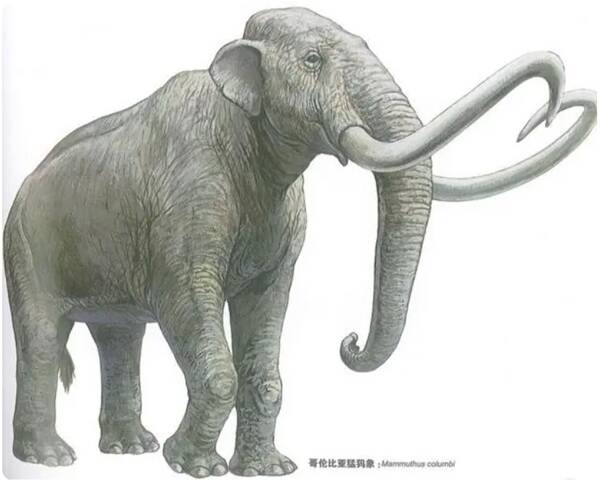
During the more than two million years of the Pleistocene, although the rapid development of humans brought some troubles to elephants, the Colombian mammoths showed good adaptability in harsh environments and spread all over Eurasia. , Africa, and North America. However, the ultimate fate still befalls them. Similar to the fate of saber-toothed elephants, when the Holocene warm period came, the elephants also experienced a fundamental decline. The ancient rhomboids and mammoths were completely extinct. Although there were still very small populations about 3,000 years ago. Populations of mammoths live on islands in the Arctic Ocean northeast of Russia. Proboscis are not the only victims of the Holocene. Along with the extinction of mammoths and ancient rhomboids, there are also a large number of strange creatures such as woolly rhinos, giant ground sloths, and glyptodonts. Perhaps our entire ecosystem will face another It is an ecological crisis leading to the extinction of large animals, or even a global mass extinction of species, but this crisis may be the death of the entire proboscidean class. Although Asian elephants and African elephants still exist on our planet, they are also in danger; today, 11 million years after they faced the last crisis, elephants' unparalleled molars and naturally created long trunks have been used Exhausting their full evolutionary potential - you can't imagine that they can evolve new organs like their ancestors did, and thus have miraculous powers of recovery. The proboscideans have lasted for 60 million years of hard times and experienced three ups and downs of glory before finally exiting the curtain of history. Perhaps we need to accept the fact that in the universe, things rise and fall, and things are born and destroyed. Species, like life, have their own cycles. In the process of species evolution, there is a power that we cannot fully understand and grasp. Quietly deciding their life and death, just like ourselves, we are also unable to control our own destiny. Although the past cannot be admonished, the coming may not be pursued. However, the evolutionary story of elephants has composed a beautiful and colorful dream of life and death, which is enough to remain in the long river of history and deep in the hearts of us who love nature. at.
animal tags:
We created this article in conjunction with AI technology, then made sure it was fact-checked and edited by a Animals Top editor.